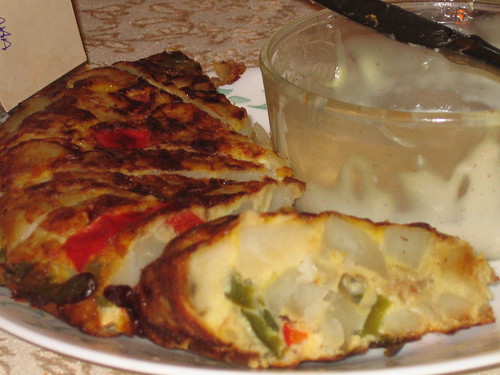
INGREDIENTS (Serves 6 - 8 as an appetizer)
- Olive oil
- 1 large yellow onion, chopped
- 1 small green bell pepper or half of a large one, thinly sliced into 2" pieces
- 1 small red bell pepper or half of a large one, thinly sliced into 2" pieces
- 3 to 4 garlic cloves, finely chopped
- 6 large Idaho potatoes, peeled and cut into 1/2" chunks
- 6 large eggs or 5 XL eggs
- Kosher salt
- Ground black pepper
In a cast iron skillet, heat 3 tablespoons of olive oil on medium-high heat. Add chopped onions and cook for 4 minutes. Lower heat to medium-low and add bell peppers (green and red) and chopped garlic, 1/4 teaspoon salt and a few grinds of black pepper, and cook slowly for 10 more minutes. Set aside in a bowl.
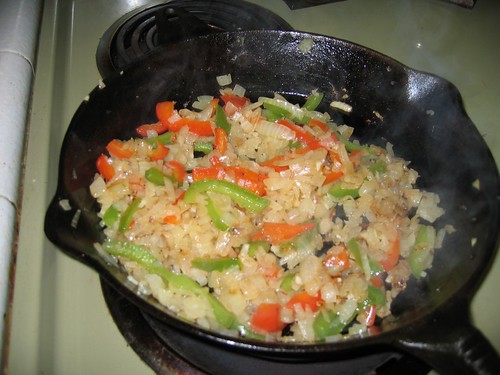
Wipe the skillet and add about 1/2 cup of olive oil and heat on medium-high. Once the olive oil starts to shimmer a little, add all the diced potatoes and 1/4 teaspoon of salt. 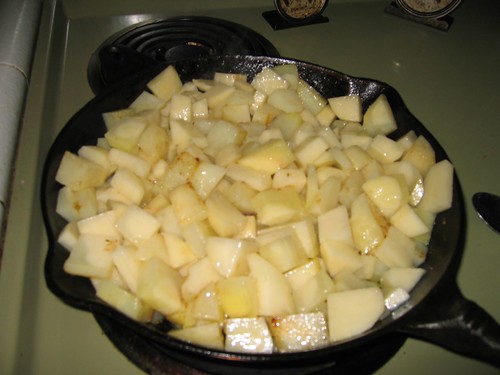 Toss for a two minutes then lower heat to medium-low. Put a lid on skillet or cover with the skillet with a plate and let potatoes cook for 15 minutes--just remember to keep tossing every 5 minutes or so. You want the potatoes to cook through yet not be mushy. Drain the potatoes on a colander and set aside.
Toss for a two minutes then lower heat to medium-low. Put a lid on skillet or cover with the skillet with a plate and let potatoes cook for 15 minutes--just remember to keep tossing every 5 minutes or so. You want the potatoes to cook through yet not be mushy. Drain the potatoes on a colander and set aside. 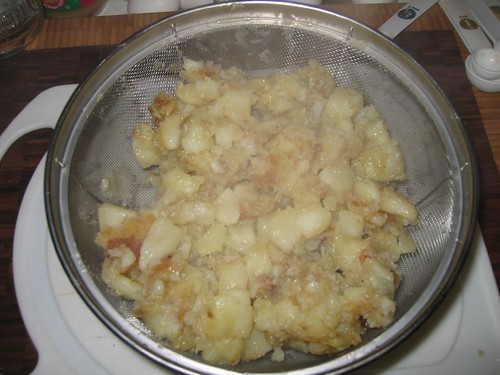
In a separate bowl, lightly beat the eggs with 1/2 teaspoon of salt and a bit more black pepper. Mix potatoes, onions and peppers lightly, until well combined and set aside.
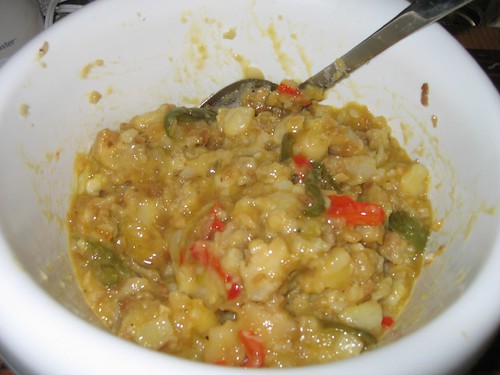
In a 10 inch non-stick skillet, add 1 teaspoon olive oil on medium-high heat. Add the potato/egg mixture and pat down. Let cook for 3 minutes then lower heat to medium-low again and cover. Let it cook for about 15 minutes, checking the sides to make sure it doesn't get burnt.
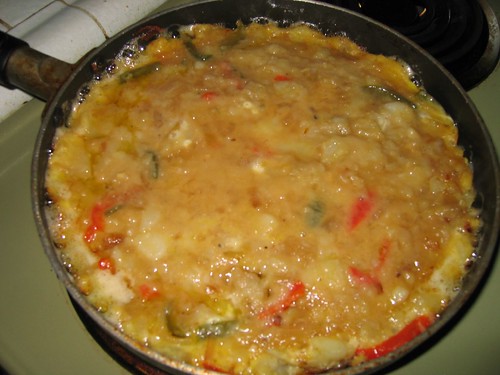 Place a plate over the top of skillet and flip it over (see movie below).
Place a plate over the top of skillet and flip it over (see movie below).
Cook the tortilla on the other side also on medium-low for another 10 minutes. Once tortilla is done, slide it into to your serving plate and let it cool down to room-temperature. The tortilla tastes best at room temperature and with a side of aioli. Buen provecho!
Diva's Amazing (and super easy) Aioli Sauce
- 3 garlic cloves, finely minced
- The juice of half of a lemon
- 1/2 teaspoon Dijon mustard
- 1/2 cup Best Foods Mayo
- Salt and pepper to taste
Mix all ingredients in a small bowl and place in fridge for a few hours for flavors to marry. Serve at room temperature with the tortilla.


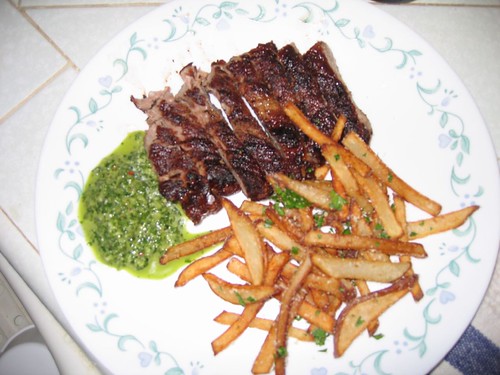
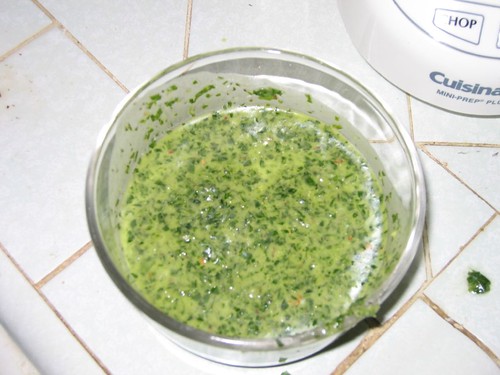
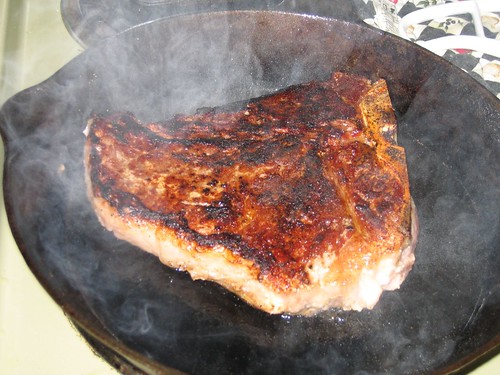 Turn over and sear for 2 minutes more. With your oven-mittens on, carefully place the pan in oven and let it finish cooking. Bake 5 minutes for medium-rare, up to 10 minutes for medium-well. Don't go longer than 10 minutes.
Turn over and sear for 2 minutes more. With your oven-mittens on, carefully place the pan in oven and let it finish cooking. Bake 5 minutes for medium-rare, up to 10 minutes for medium-well. Don't go longer than 10 minutes.
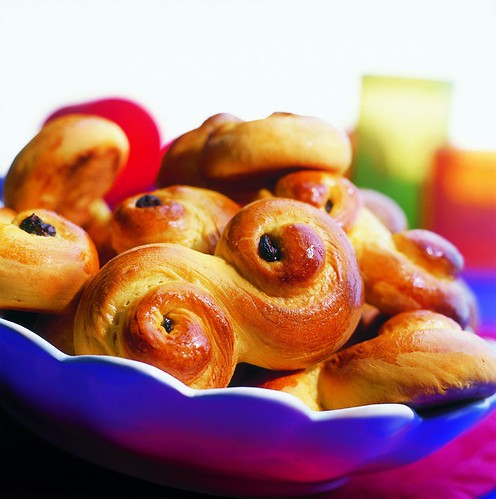
 Carefully place the buns on a greased cookie sheet, cover, and let rise until they are doubled in size. Mix and egg and water and brush the tops of the buns. Decorate with raisins on each end (see diagram) and bake at 350°F for 15 to 20 minutes or until golden brown.
Carefully place the buns on a greased cookie sheet, cover, and let rise until they are doubled in size. Mix and egg and water and brush the tops of the buns. Decorate with raisins on each end (see diagram) and bake at 350°F for 15 to 20 minutes or until golden brown.